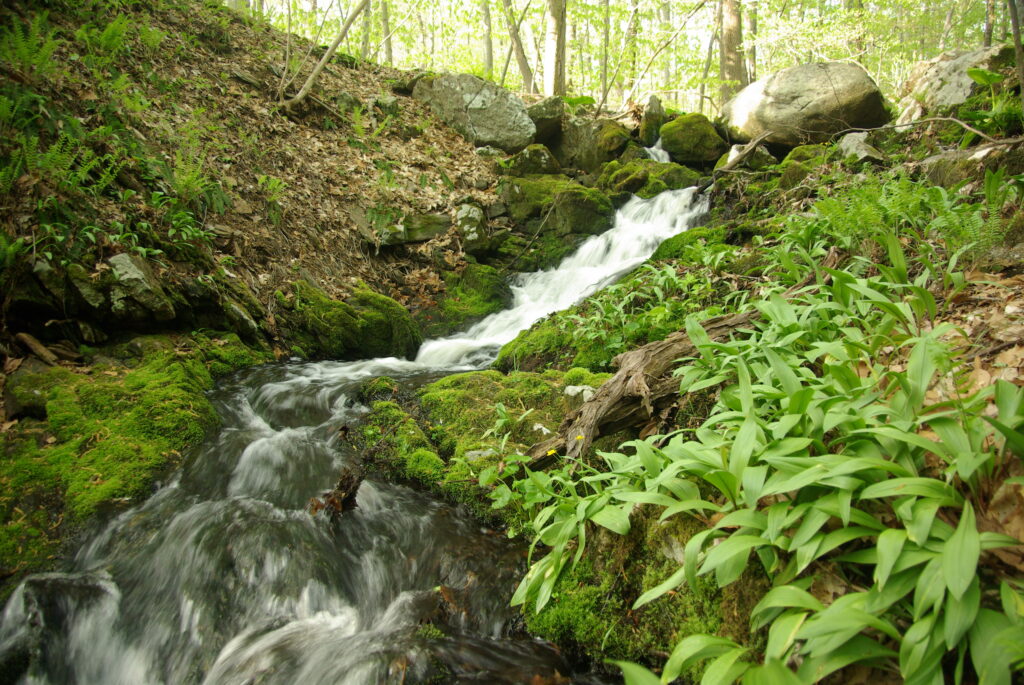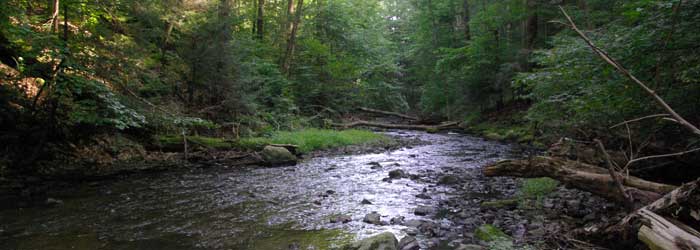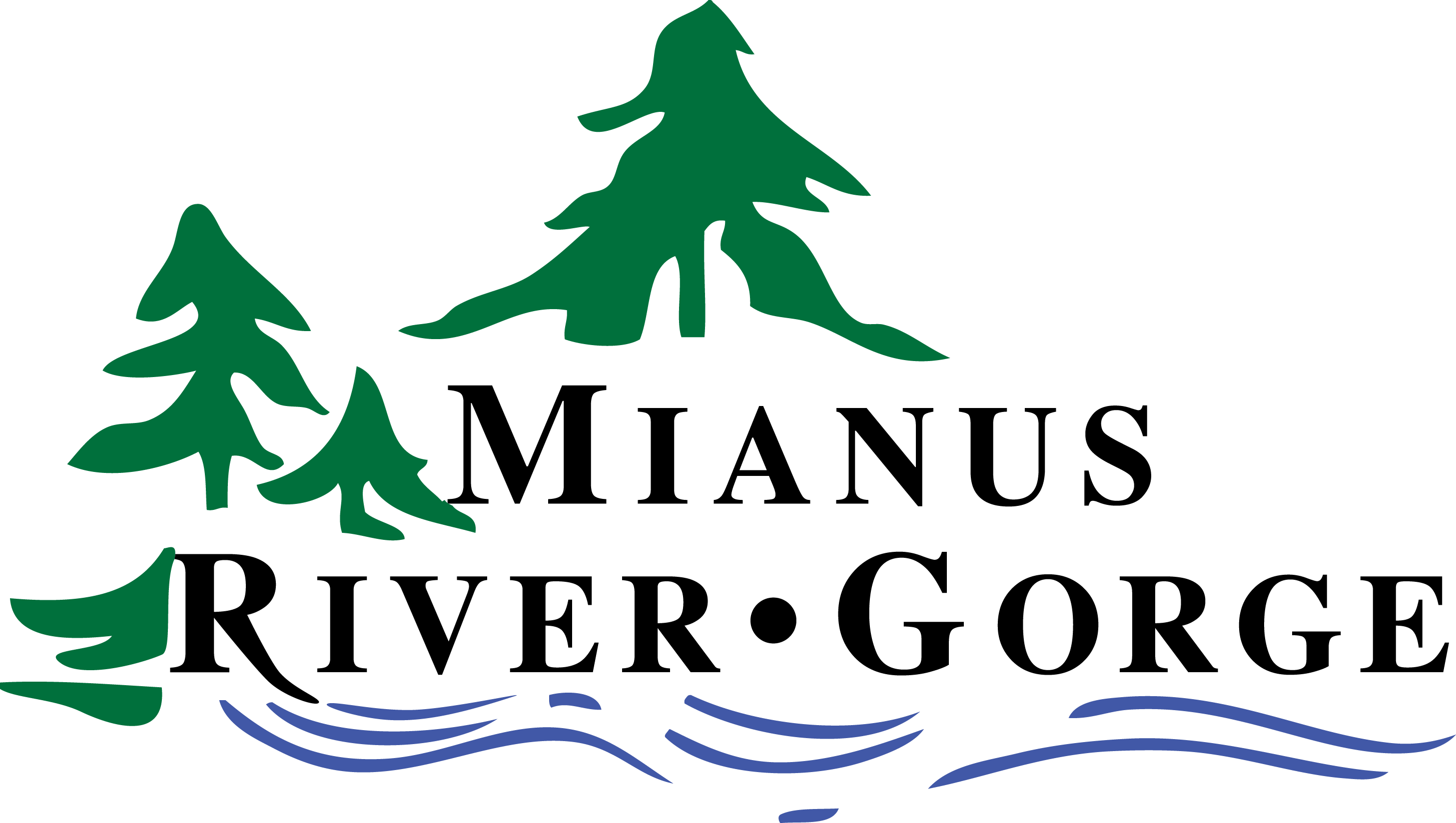
Water, a finite commodity that we cannot live without, is often taken for granted, but water protection is a long and complicated process that begins with protection of watershed lands. Whether it’s safeguarding the well on your property or an entire municipal water supply, land protection plays a vital role.
Undeveloped, healthy land protects aquifers and actively filters rainwater and runoff, adding crucial minerals as it seeps into groundwater. The boom in the bottled water market and ownership of many water supplies by large international companies are just two examples that highlight the economic value of this fragile and limited resource.

Land protection has been the focus of Mianus River Gorge (MRG) for over 67 years, starting with 60 acres in 1953 and now totaling over 2,000 acres protected throughout the Mianus Watershed. Wetlands, stream buffers, steep slopes, and alluvial plains are all key components of this healthy water system. With outright purchase, donations, conservation easements, or as part of complicated protection projects with multiple partners, MRG continues to target parcels critical to assuring the longevity of this delicate water resource. Earlier this year, MRG added another 3+ acres of critical watershed land in Pound Ridge and Bedford. Although not a huge parcel, it is one that is strategically located to protect the steep slopes draining to the Mianus River and the drinking water supply. It is just one more place where water is naturally filtered and enriched before entering households in Greenwich, Rye, Rye Brook, and Port Chester.
And with clean and abundant water, also comes a healthy ecosystem flowing into Long Island Sound (LIS). The Sound is a significant breeding site for anadromous fish species like river herring and alewife – the food for larger LIS fish species, as well as osprey, eagles, and more. The Mianus River has the largest breeding population of these species anywhere in CT, with over 40,000 returning each year.
What a priceless resource this river watershed is. One that ultimately is in the hands of its communities. Its health and viability will ultimately be a function of sound municipal planning, community involvement, innovative engineering strategies, education, and, of course, active land protection, which the Mianus River Gorge will continue to pursue, one priority parcel at a time.

